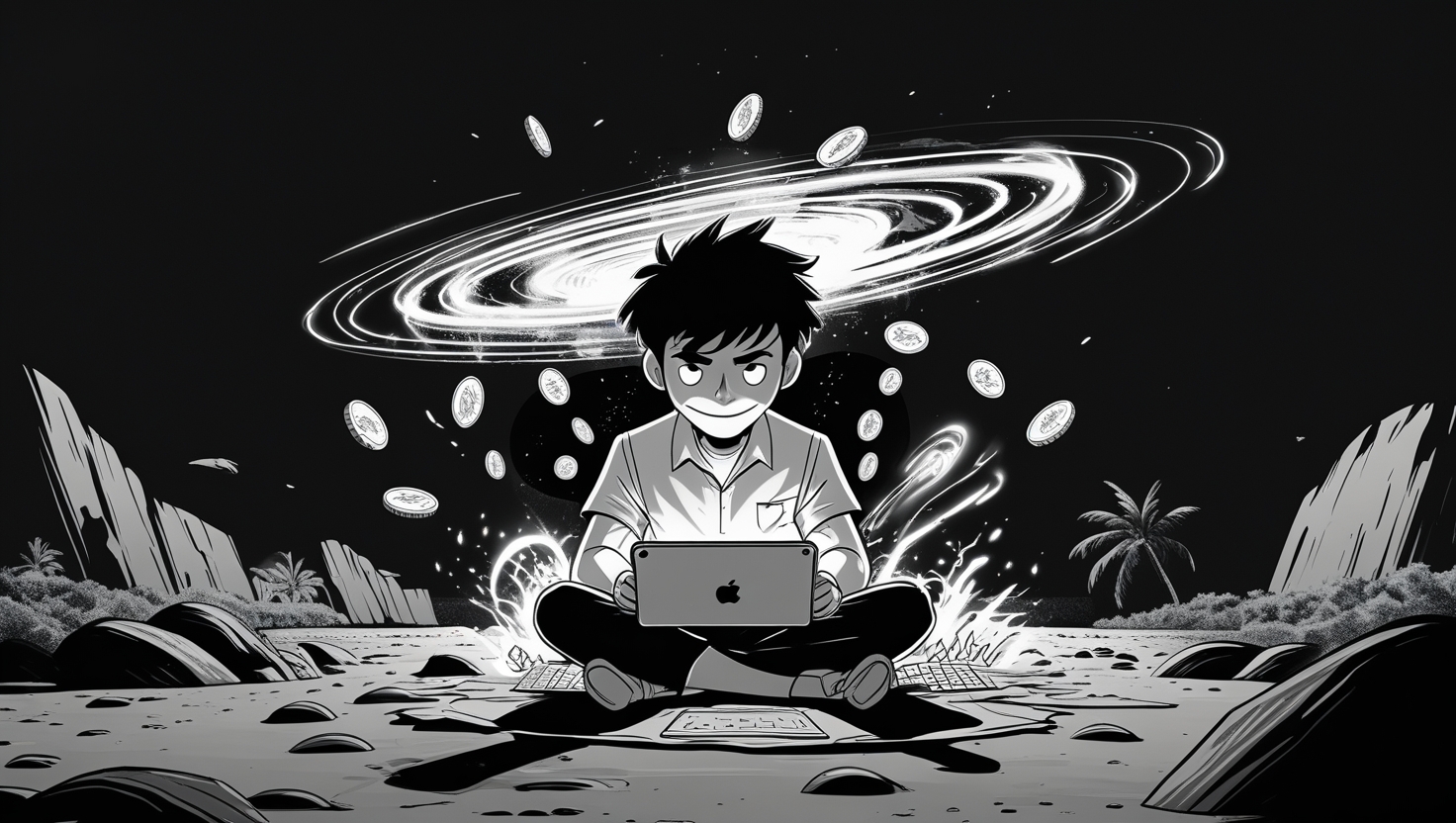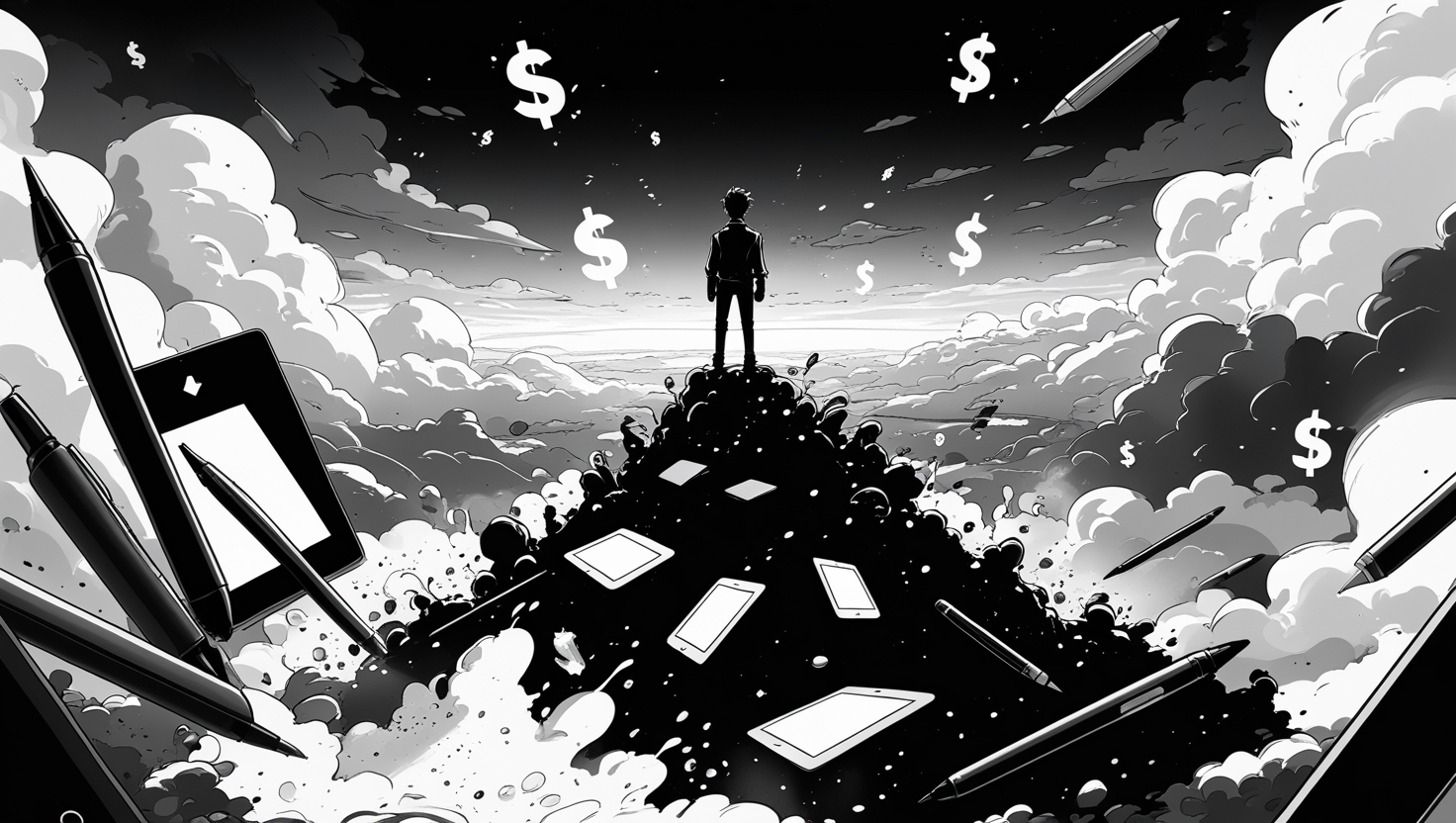If you’ve ever dreamed of breaking free from the traditional office setting and channeling your creative energy into profitable projects, you’re in the right place. In today’s digital age, freelance art opportunities are more accessible than ever before. Whether you’re an experienced illustrator, a budding graphic designer, or someone who’s simply looking for a creative side hustle, the world of independent art jobs is bursting with potential. For a comprehensive guide on getting started in this dynamic field, don’t forget to check out our article on How to Start Freelancing.

Exploring the World of Freelance Art Opportunities
The idea of earning big while having the freedom to create anywhere is incredibly alluring. Many aspiring artists are now considering freelance art roles not just as a temporary gig, but as a long-term career. With the help of reliable digital platforms and global marketplaces, independent artists can showcase their work, receive international commissions, and even cultivate a loyal following online. The creative landscape has shifted dramatically, allowing talented individuals to merge artistic passion with lucrative opportunities.
Freelance art opportunities not only empower you to work remotely but also enable you to explore niches such as digital illustration, animation, graphic design, and even traditional mediums transformed for an online audience. If you’re wondering how to harness these opportunities, read on as we dive deep into the platforms, challenges, and practical strategies tailored for creative freelancers.
Popular Platforms and Global Marketplaces for Independent Artists
In the competitive world of art freelancing, selecting the right platform can make all the difference. Leading sites like Behance, 99designs, and ArtStation serve as both portfolios and marketplaces where talented creators connect with potential clients from around the world. These platforms not only showcase your work to a global audience but also provide a steady stream of freelance art jobs online. Additionally, marketplaces like Etsy offer an excellent opportunity for selling your original artworks or prints, thereby reaching collectors and casual buyers alike.
It’s important to note that every platform has its own audience and set of opportunities tailored to various creative niches. Some platforms emphasize design contests and client commissions, while others focus on community engagement and portfolio building. The selection of the right portal for your skills can significantly boost your exposure and success rate.
Comparison of Major Creative Platforms
| Platform | Specialty | Ideal For |
|---|---|---|
| Behance | Portfolio Showcasing & Networking | Experienced Artists & Creative Professionals |
| 99designs | Design Contests & Client Projects | Graphic Designers Seeking Competitive Work |
| ArtStation | Digital Art & Concept Design | Digital Illustrators, Animators & Game Artists |
| Etsy | Handmade and Original Art Sales | Independent Artists, Crafters & Print Sellers |
Each platform offers its unique set of advantages and potential challenges. For instance, while Behance is perfect for networking and building a robust portfolio, 99designs focuses on connecting you with competitive design jobs that require meeting specific client deadlines. ArtStation, on the other hand, has grown into a hub for digital art professionals looking for collaborative projects and showcases. Meanwhile, Etsy has opened up a global marketplace for artists to sell their works directly to consumers.
Navigating the Challenges of Freelance Art Careers
Although freelance art opportunities offer flexibility and financial potential, they come with their own set of challenges. One of the most common hurdles faced by independent artists is pricing their work appropriately. How do you decide on a rate that reflects your skill set and market demand without underselling your creativity? This question is crucial for those diving into this field.
Another challenge includes preserving the authenticity of your art while meeting client expectations. Commercial projects often demand a balance between artistic freedom and client specifications. Many creative freelancers feel torn between remaining true to their personal style and adapting to market needs. Moreover, negotiating contractual terms can be a daunting task, especially if you are new to the freelance marketplace. Contract negotiation involves not only setting clear deliverables but also ensuring that intellectual property rights and payment terms are well defined.
Experience has taught many artists that overcoming these challenges requires a blend of confidence, clear communication, and continuous learning. Have you ever experienced the uncertainty of pricing your artwork or felt overwhelmed by negotiation terms? It’s a common experience, but each challenge is an opportunity to refine your business acumen and creative process.
Practical Strategies to Boost Your Freelance Art Career
So, how can you thrive in the competitive arena of freelance art opportunities? The key lies in a combination of building a professional digital presence, smart networking, and continuously refining your craft. One of the best ways to start is by developing a polished online portfolio. A comprehensive portfolio not only showcases your best work but also tells your unique creative story. This piece of digital evidence is essential in convincing potential clients of your expertise.
Utilizing social media platforms is another effective strategy. Platforms like Instagram, TikTok, and Twitter can expose your work to millions of potential fans and clients. Imagine your art going viral on TikTok, where creative communities thrive with over a billion users – that kind of exposure can transform your freelance career overnight. Additionally, joining communities such as digital art associations or local artist groups is a fantastic way to build relationships, gain insights, and discover collaborative opportunities.
Networking is more than just sharing your work; it’s about engaging with your audience, asking for feedback, and even mentoring upcoming artists. Many successful freelancers share how their online interactions led to unexpected projects and long-term client relationships. Have you ever considered how regularly engaging on social media might expand your range of freelance art opportunities? It’s a simple yet profoundly effective habit that can pay tremendous dividends.
Freelance Artist Jobs: Remote, For Beginners, and Online
The digital landscape has redefined what it means to work remotely. Today, many artists enjoy the flexibility of handling projects from the comfort of their own home or from anywhere in the world. Freelance artist jobs remote are not only ideal for those who wish to travel but also for individuals seeking a balanced work-life dynamic. The convenience of online collaboration tools means you can connect with international clients without ever leaving your creative space.
For beginners, the prospect of entering the freelance art scene can be both exciting and intimidating. It’s important to remember that every expert was once a beginner. Numerous online platforms specifically cater to freelance art jobs for beginners by offering entry-level projects and mentorship opportunities. Starting small, building a robust portfolio, and participating in community challenges can gradually lead to bigger projects and more lucrative commissions.
Furthermore, the growth of freelance art jobs online has been exponential. With digital marketplaces providing round-the-clock opportunities, artists find themselves at the intersection of creativity and entrepreneurship. Whether you’re juggling part-time projects or planning to transition to full-time freelancing, the digital age offers endless pathways to success. Isn’t it time you explored the vast potential of remote work and transformed your passion into a rewarding profession?

Creative Tips and Tricks for Building Your Unique Brand
Building a brand as an independent artist is a journey that involves constant evolution and experimentation. Here are some creative tips to set you apart from the competition:
First, invest time in developing a consistent visual identity. Whether it’s a memorable logo, distinctive color schemes, or even a particular style of digital illustration, these elements help craft an identity that clients and fans will remember. Consistency doesn’t mean sacrificing creativity – it’s about finding a signature that resonates with your audience. Second, maintain an active blog or vlog that documents your creative process. Sharing behind-the-scenes content, tutorials, or even personal reflections can make your brand more relatable and trustworthy. Third, seek out feedback actively. Engage with online forums, social media communities, and local art events to gain insights that can refine your technique and business strategy.
Finally, be open to collaboration. Freelance art opportunities often come through referrals and partnerships. Collaborating with other artists or brands can introduce you to new markets and unexpected creative challenges. Reflect on your own experiences – have you ever been proud of a collaboration that pushed your creative limits?
Successfully navigating the freelance art market requires more than just artistic talent; it requires strategic planning and a willingness to adapt. Every project, every client, and every negotiation is an opportunity to learn and grow in your chosen field.
In conclusion, whether you are an established artist or just starting out, the realm of freelance art opportunities offers endless potential. With the right digital presence, strategic planning, and continuous engagement with the creative community, your journey towards earning big and creating anywhere is just beginning. Embrace the challenges, learn from each project, and let your creativity lead the way!
Where can I find more insights into starting a freelance career?
If you’re looking for more detailed guidance on entering the freelance world, I highly recommend our in-depth article on How to Start Freelancing. Additionally, resources such as Behance not only showcase global talent but also serve as educational hubs for industry insights and trends.
How can I price my artwork competitively without underselling my skills?
One of the biggest challenges for freelance artists is pricing their work appropriately. Start by researching industry standards and consider your experience level, project complexity, and market demand. It might be helpful to consult online resources or even join artist communities where pricing strategies are often discussed. Over time, as your portfolio and reputation grow, you can gradually raise your rates in line with your achievements and market trends.
What tips do you have for artists working remotely?
Working remotely as a freelance artist offers great flexibility, yet requires discipline. Establish a dedicated workspace, adhere to a consistent schedule, and invest in reliable digital tools for collaboration. Clear communication with clients is key, as is the readiness to adapt to different time zones and cultural norms. Remote work is all about finding the balance between creative freedom and professional responsibility.
